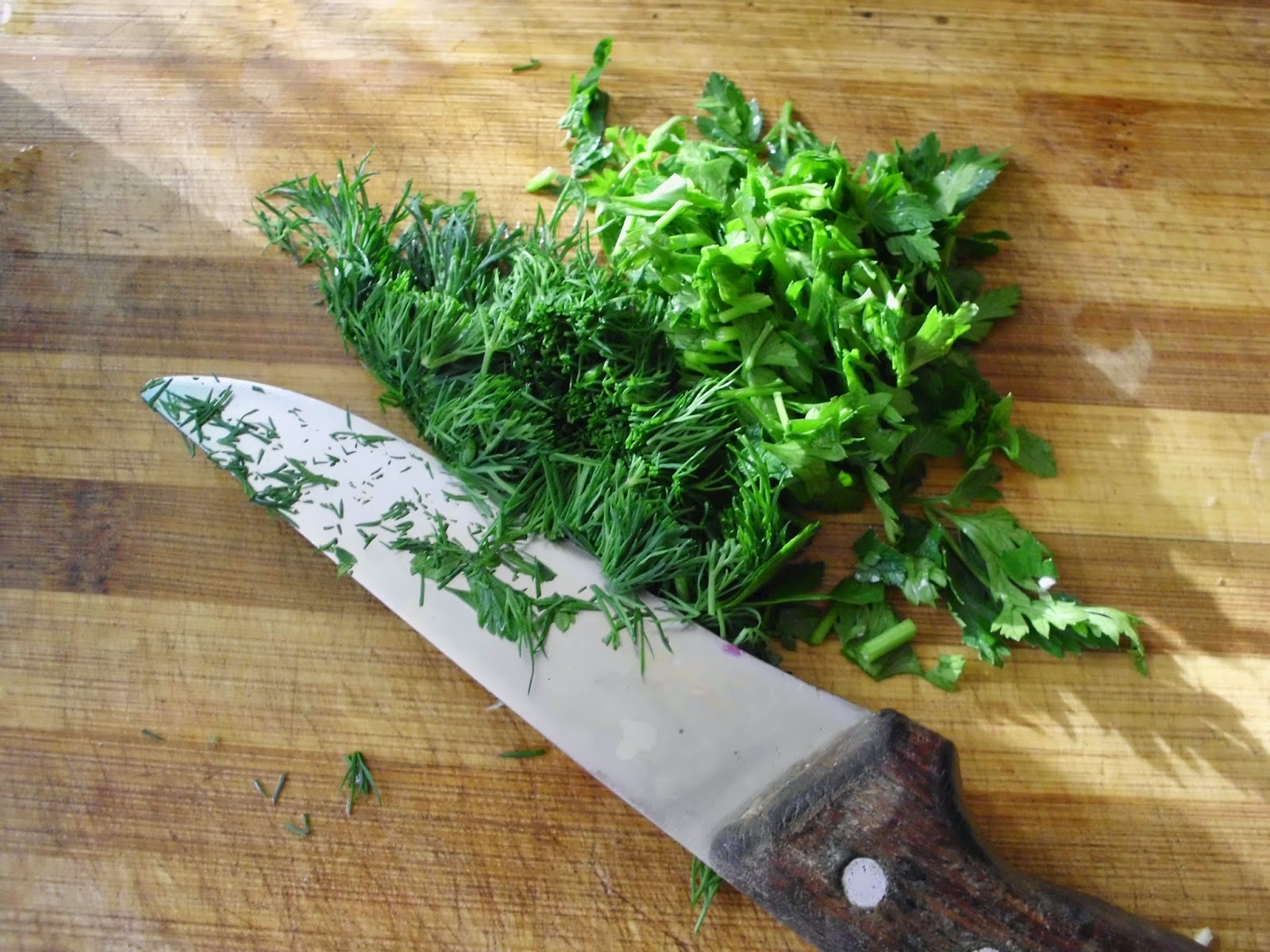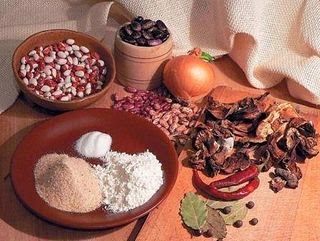Did you know that: during WW1,
due to concerns the American public would reject a product with a
German name, American sauerkraut makers relabeled their product as
"Liberty cabbage" for the duration of the war. (Thank you Wikipedia)
Sauerkraut is one of the healthiest stuff you can eat. It can literately rise you from the dead, without any candles and spooky rituals. I experienced that so many times, when after getting shit faced and that ''please kill me now'' feeling in the morning I become Superman after just one glass of sauerkraut water (in Serbia also known as rasol).
Sauerkraut is part of food that we call winter food (zimnica) in Serbia. That's food made out of processed vegetables that you prepare in the autumn, so you can eat it during winter time. Even when i was a kid, vegetables in shops and supermarkets during winter weren't so common, and if you even find them, they were quite expensive. Since Serbian people are used to constant economic crises and money shortage, they invented ways how to process vegetables while they are cheap (or free if you grow them on your own) so they can last during periods when they become expensive and kind of luxury (winter).
 |
| Serbs like their cabbage |
The most important member of winter foods family is definitely sauerkraut. My family used to prepare 100 kilos of sauerkraut every winter. We ate it every day. It's the thing that made us healthy, it's also the food that cured biggest health problem of early explorers, scorbut (lack of vitamin C). So if it was good for my family, Captain James Cook and his crew, it's good for you too.
In Serbia they say that the best cabbage for making sauerkraut is the one from village called Futog. This place is all about cabbage, they have cabbage festival in the autumn, people selling cabbage on the road side etc. I'm not sure you can find that kind of cabbage outside Serbia, but the main thing is to choose some cabbage that's lighter in weight. Making sauerkraut is cheap and fun. Like in video games there are 3 levels of difficulty easy, medium and hard. Last one needs little more labor, but the taste of the sauerkraut is so much better that way.
 |
| Autumn in Serbia, selling cabbage on the roadside |
|
|
|
Ingredients:
10 kg (22 lbs) of cabbage,
200-300 g (7-10 oz) of salt,
water, black peppercorns, bay leaf.
1. Easy
First you need to find a clean plastic barrel with a top (in Serbia also known as katsa), some white cloth, few wooden boards that can fit in the barrel and one heavy stone.
 |
| Heavy stone is the most important piece of equipment. |
|
|
|
You take how much cabbage you intend to put in your barrel. After buying it you leave it for a few days on the cold (outside). After that you take off outside leaves from each head, and you carve out the cabbage root with a knife, in a way that you get a deep hole. After that make few centimeters (an inch) deep cross mark on the cabbage with your knife. Center of the cross should be the hole where the cabbage root once was, and it should go all across the back of a cabbage head.
 |
| Cabbage head, properly carved up. |
Fill the hole where the root was with salt. Then put your cabbage in the barrel, so the part with a hole is looking up. Some of the smaller heads you can cut in half one or two times, rub some salt on them and put them in between the other heads to fill up the void. Then put some more salt on top and in between cabbage heads, some black peppercorns and some bay leaf. Then pull some water over the cabbage, cabbage should be sunk in water, tuck it in white cloth, then put the wooden boards and the big stone on top, which you washed first. Leave it like that in the basement or somewhere else. Bigger the temperature in the room where cabbage is, it's gonna ferment faster, and if you leave it on some hot place it's gonna become too sour, and later it's gonna become rotten, so watch out where you keep it. After approximately one month, you can try your sauerkraut and feel proud of yourself..
 |
| Salted cabbage heads in the barrel before pouring water |
2. Medium
If you prepare your sauerkraut this way, you will make two different sauerkraut products. One of those two are the sauerkraut heads, which you can use for sarma and other is shredded sauerkraut, called ribanac in Serbian. To make ribanac you will need a cabbage shredder. Do all the same like in the easy mode. Leave cabbage you bought on the cold for a few days, then separate it in two piles, depends which kind of sauerkraut you like more, you can put more whole cabbage heads in the barrel or more shredded kind. With cabbage heads do the same as written in the easy mode manual, cut all cabbage from the other pile with your cabbage shredder, put it in-between cabbage heads, when you fill up all the void, start putting it on top, put one layer of cabbage, then add some salt, then take your shoes and your socks off, wash your feet and step on the cabbage in the barrel, you can jump on it as well (I told you it's fun), just watch out not to flip over the barrel. Then add some black peppercorns and bay leaf. Do the same until you use all the shredded cabbage (cabbage, salt, jump,pepper and bay leaf, repeat).
 |
| Shredding cabbage |
In the end give it some really good stomping, if cabbage didn't let out enough water to cover it, add some water, put the cloth on top, wooden boards and of course the heavy stone. Ribanac cabbage needs less time to become sauerkraut then cabbage heads, so you can eat it sooner. Check it from time to time.
3. Hard
This is a hard core way of preparing sauerkraut for really dedicated people. It's basically the same as the medium way, only difference is you need much more stepping and jumping on your cabbage. Main idea is to make cabbage let enough water so it can be sunk and pressed without adding any additional water to the barrel. This is the best you can get, and believe me, after a month of anticipation, you will be amazed and very proud, and all the hard work you put into it will pay off. It's also important to chose right music for this kind of work.
In the end I would like to mention some of the stuff you can do with your sauerkraut. You can e
at it as a salad with some ground paprika on top, roll stuff in its leaves and make some veggie
sarmas, bake it in the oven and make dish called
podvarak (I was amazed when i saw the same dish in Poland where it's called
bigos), cook it in the pot (preferably made out of clay) and make a dish called
svadbarski kupus (wedding cabbage),
fry it in the pan and serve it with some cooked potatoes for example, or as a side dish,
drink saurkraut water (a.k.a. rasol) from it when you have a hang over (it helps, i tried),
make a soup with it by using some sauerkraut and some water etc. There are infinite possibilities. Some of the dishes i put on this list are not vegetarian, like svadbarski kupus for example, but that's why i made this blog in the first place, to show people how they can prepare all those without any meat, and enjoy their food.
Photos: First two from kurir-info, forgot where the third is from, fourth is mine, fifth one is from coolinarka and the last one from the web site called mostarskaraja.
















